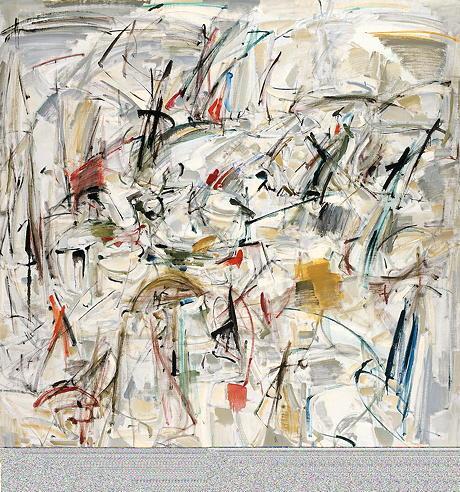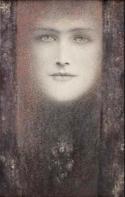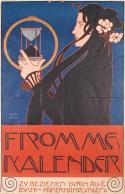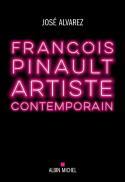Art Of The Day Weekly
#537 - from 13 December 2018 to 19 December 2018

Joan Mitchell, Untitled, ca 1952-1953, oil on canvas, 182,8 x 172,4 cm. Fondation Gandur pour l’Art, Genève. Photo M. Aeschimann © Estate of Joan Mitchell.
IN THE AIR
Mitchell-Riopelle, fatal attraction
LANDERNEAU – Till death do us part… for the love of art. Passion, excesses, and violence marked the relationship between American artist Joan Mitchell (1925-1992) and Canadian artist Jean Paul Riopelle (1923-2002). The two abstract expressionists chose France to create, love one another, fight, and self-destroy. While Riopelle often had the best part of the cake, the recent explosion of Mitchell’s rating (in particular at the last edition of Art Basel at Basel, at Lévy Gorvy) puts them back on an equal footing. This mano a mano, based on large formats, follows them over their relationship that lasted a quarter of a century, from 1955, when they were in their early thirties, and which ended in 1979, when both were bumped up by life and alcohol, but both were just as creative.
• Mitchell Riopelle, un couple dans la démesure at the Fonds Etienne et Hélène Leclerc pour la culture , from 16 December 2018 to 22 April 2019.
EXHIBITIONS

Ferdinand Khnopff, Mask with Black Curtain, 1892, pencil and pastel on paper, 26,5 x 17 cm. Private collection. © Christie’s Images/ Bridgeman Images.
Khnopff’s secrets
PARIS – Belgium has always been a fertile land for painters of symbols, of mystery, of enigma (as a matter of fact it is the second title stamped on this exhibition). This concerns Magritte, Delvaux of course, and before them Ferdinand Khnopff (1858-1921), the champion of symbolism. The first retrospective dedicated to him in Paris over the last forty years, underlines his eternal feminine – red headed, haloed women, their eyes lost in the horizon, his town – Bruges – as well as his strange home bathed in perfumes referred to through out the visit. One has the feeling of facing an artist with his own internal secret garden – a truly rare and exciting virtue in our time where everything is brought out to the public eye.
• Fernand Khnopff, le maître de l’énigme at the Petit Palais, from 11 December 2018 to 17 March 2019.

Abdelaziz Gorgi, Untitled, gouache on paper, 50 x 65 cm, no date. Private collection © Galerie AGorgi / photo. Firas Ben Khelifa.
Gorgi, a rediscovery
TUNIS – He is truly outside of Tunisia, which proves borders are not as pervious as is said… Abdelaziz Gorgi (1928-2008) had a long career that started right after the country’s independence, and during which he produced easel paintings as well as large public decorations, inspired by Klee and Adami. His daughter, who owns one of the better art galleries in the country, at Sidi Bou Saïd, is the linchpin of this monograph that includes some 300 works and fits his career into the more general framework of the School of Tunis.
• Abdelaziz Gorgi at the palais Kheireddine, from 7 December 2018 to 10 February 2019.
Moser, the centennial
VIENNA – A renovator of decorative arts that were then at the center of the world, and consequently of the European vocabulary, Koloman Moser is part of the generation that disappeared in 1918, as if to mark the end of a certain world. He was older than Schiele, younger than Otto Wagner, and when he died at the very young age of 50, he could undoubtedly have created a lot more. The exhibition is nourished by the very rich collection Museum of Decorative Arts (MAK), and includes pieces rarely seen. It reviews the artist’s full career and timely reminds us that before being the spearhead of a new design, Moser was a painter and he came back tot his first love at the end of his life. In parallel, the Theatermuseum studies the relations Moser had with the performing arts.
• Koloman Moser at the MAK, from 19 December 2018 to 22 April 2019.
BOOKS
Pinault, a personal portrait
The title is somewhat misleading. It not only deals with the relations between the captain of industry and art – he owns one of the most beautiful collections in the world – but is also a laudatory and critical portrait of a Gallo speaking Breton from Trévérien who built his career with the sweat off his brow. When the American jury of the Executive Life case asked him what he had learned in school, he simply answered “How to speak French.” The tone of the book is unexpected, at times pungent, at others flattering, and shows how he climbed the social ladder starting at a sawmill, continues with the large department stores Conforama and Printemps, then the FNAC, the Rennes Football Club (back in Brittany!), as well as Christie’s, the auction house. His passion for art is obviously dissected: triggered off by the purchase of a first Mondrian under the advice of Marc Blondeau, the saga of Venice then that of the Bourse de Commerce in Paris, his ties with contemporary creators, such as Koons, Hirst or Cattelan. The latter succeeded in designing his tomb against his own will. This passion became consuming with time and was amplified by his second marriage with Maryvonne, who had an antiques shop in Rennes. In the case of this condottiere who succeeds in everything he tries, except to eliminate his fear of death, his love for art is more than a passion, it is a way of seeking immortality.
• François Pinault, artiste, by José Alvarez, published by Albin Michel, 2018, 320 p., €23.



